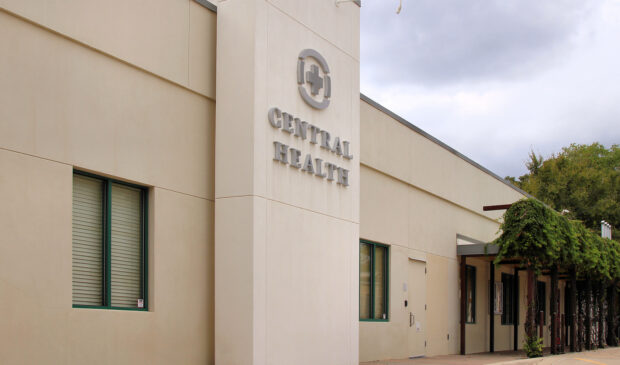Central Health board considers improvements to reaching target communities
Friday, August 16, 2024 by
Chad Swiatecki Members of the Central Health Board of Managers turned their attention Wednesday to how well the organization is doing at finding those who need health care and other services in a number of areas throughout East Austin.
The discussion came during a managers’ meeting prior to the public hearing on Central Health’s next budget, which is scheduled for a vote next Wednesday.
Ivan Davila, senior director of marketing and communications, began a presentation to the board by sharing details of Central Health’s marketing and outreach efforts and the goal of connecting more vulnerable residents to services such as the Medical Access Program.
Davila said the team’s work is concentrated in five communities: Central East Austin, North Travis County, Dove Springs/Montopolis, Rundberg/St. John’s, and Colony Park/Manor.
In those areas, the team is most focused on reaching people with no internet access, communities of color, those involved in the criminal justice system, those experiencing homelessness, and county residents earning less than 200 percent of the federal poverty level.
The team shared that over the past year it had produced 458 active engagements with target populations through a variety of in-person and online events.
That work, including more than doubling the number of assistance locations, is believed to have contributed to a 201 percent increase in Medical Access Program applications.
Board members largely praised the positive results while questioning specific tactics or recommending ways to better penetrate neighborhoods and communities that the organization struggles to reach.
“We do a great job around the corridors of I-35, Rundberg, St. John’s, down in Del Valle and maybe Dove Springs … you mentioned that we’re trying to do some things out in Northeast Colony Park and there’s also the community of Manor out there and there’s also the community of a parts of Elgin,” Board Member Shannon Jones said. “Those populations are African Americans so my question goes to the fact that I believe in diversity and the like, but where are we in trying to encourage and recruit for staffing purposes?”
Davila said in many cases the outreach efforts are conducted in tandem with partner organizations that are already established in a given area, and “we’re constantly working with vendors to help us reach communities that our team isn’t able to reach, like the Manor and Northeast Travis County areas.”
Board Member Cynthia Valadez said she’d like to see and hear more feedback from the overall conditions in communities such as the Montopolis area so Central Health leaders can look at other social determinants that can impact a community’s overall health.
“It’s almost as if it’s the Wild Wild West there, there is no policing of the constant daily, hourly break-ins that are occurring,” she said. “When your team goes out and does outreach it may be a little bit more difficult, but when you’re going into someone’s home or in their neighborhood I’m hoping that y’all are keeping track of what issues that you see for that neighborhood … lack of parks, no sidewalks, all this is infrastructure stuff that goes to build a good-quality neighborhood.”
While Jones and Valadez also suggested adding Asian and African American staff members to the team to better fit the diversity of the target communities, Board Member Amit Motwani suggested a results-based approach to any new staffing.
“I don’t want to get into the the areas of prescribing what race or ethnicity of staffers we may need to have because of, obviously, the murky territory that gets us into, however, it would be great for us to maybe agree on what an outcome might be that we’d like to see and then hear about, like tactics that we’re working on to get to those outcomes,” he said. “Especially when it comes to engaging with populations and races and ethnicities and other demographic qualifiers in very particular geographic areas.”
Photo by Larry D. Moore, CC BY 4.0, via Wikimedia Commons.
The Austin Monitor’s work is made possible by donations from the community. Though our reporting covers donors from time to time, we are careful to keep business and editorial efforts separate while maintaining transparency. A complete list of donors is available here, and our code of ethics is explained here.
You're a community leader
And we’re honored you look to us for serious, in-depth news. You know a strong community needs local and dedicated watchdog reporting. We’re here for you and that won’t change. Now will you take the powerful next step and support our nonprofit news organization?




